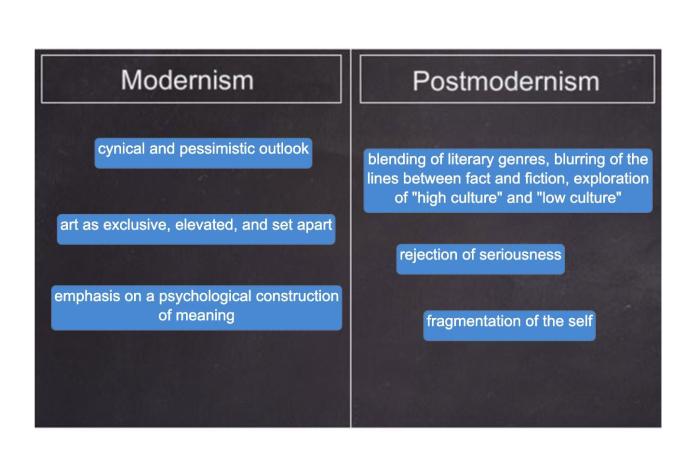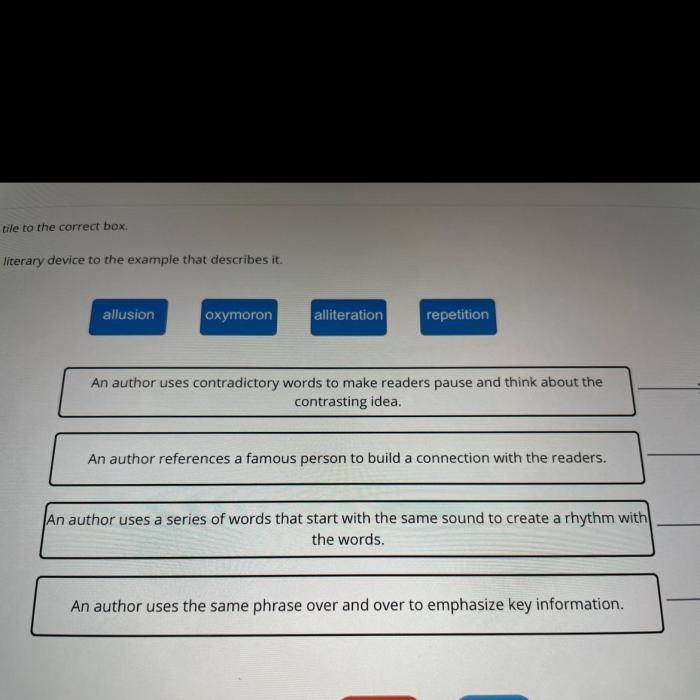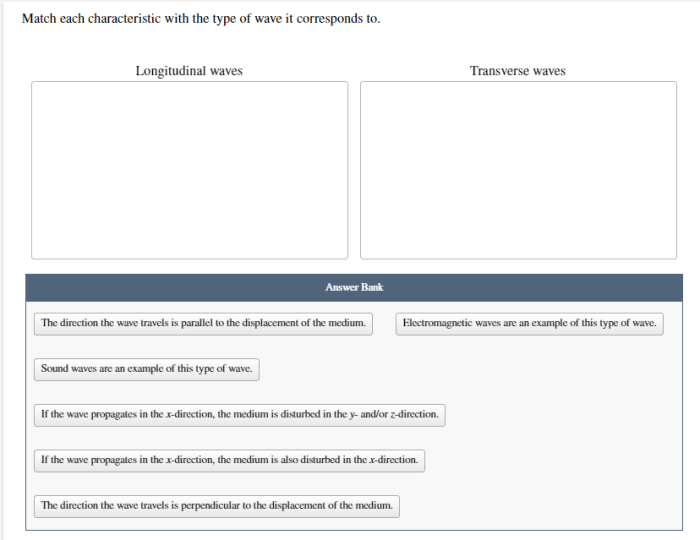Match each characteristic to the correct literary movement. – This exploration delves into the fascinating world of literary movements, providing a comprehensive guide to understanding their defining characteristics and historical contexts. By matching specific characteristics to the movements that shaped them, we gain invaluable insights into the evolution of literature and its profound impact on our understanding of the human experience.
From the Romantic era’s emphasis on emotion and imagination to the fragmented forms and self-reflexivity of Modernism, this analysis unveils the intricate tapestry of literary expression, offering a deeper appreciation for the diverse voices and perspectives that have shaped our literary landscape.
Match Characteristics to Literary Movements

In literary analysis, understanding the different literary movements that have shaped the development of literature is crucial. Each movement is characterized by a unique set of principles, themes, and stylistic techniques that distinguish it from others.
This article provides a comprehensive overview of four major literary movements: Romanticism, Realism, Modernism, and Postmodernism. It explores their key characteristics, historical context, and influence on literary works.
Identifying Literary Movements, Match each characteristic to the correct literary movement.
Literary movements are broad categories that group together works of literature that share similar characteristics and values. They reflect the cultural, social, and intellectual trends of the time period in which they emerge.
Some of the most influential literary movements include:
- Romanticism
- Realism
- Modernism
- Postmodernism
FAQ Overview: Match Each Characteristic To The Correct Literary Movement.
What are the key characteristics of Romanticism?
Romanticism is characterized by an emphasis on emotion, imagination, individualism, and a connection to nature.
How does Realism differ from Modernism?
Realism focuses on depicting life as it is, with an emphasis on objectivity and detail, while Modernism embraces fragmentation, experimentation, and a rejection of traditional forms.
What is the significance of self-reflexivity in Postmodernism?
Self-reflexivity in Postmodernism refers to the tendency of literary works to draw attention to their own constructed nature, blurring the lines between fiction and reality.


